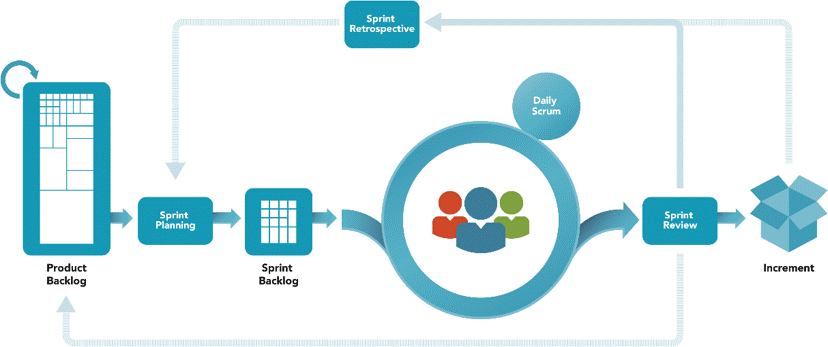Design of a Web Portal for Assertive Diagnosis and Cognitive Evolution in Children with Special Abilities
Main Article Content
Abstract
A world beyond the five senses is what opens the doors to new expectations for children with special abilities, as they lack a variety of factors due to a prejudiced society with middle-aged life stereotypes. We will use the SCRUM method to make the appropriate changes in a short time this established to norms and laws both in education and health, what we develop is a web application that generates a diagnosis for cognitive evolution in children with special abilities. The number of special children who tried the software have made great strides in terms of individual performance. The studies carried out serve the teachers as health professionals who attend to the child with a report, in order to also contribute to the individual and social improvement that the children with special abilities will present through the therapies they need.
Article Details
References
B. L. Quinn and R. W. Serna, “Educators’ Experiences Identifying Pain Among Students in Special Education Settings,” J. Sch. Nurs., vol. 35, no. 3, pp. 210–220, 2019.
T. W. Pin and P. B. Butler, “The effect of interactive computer play on balance and functional abilities in children with moderate cerebral palsy: a pilot randomized study,” Clin. Rehabil., vol. 33, no. 4, pp. 704–710, Apr. 2019.
M. Pellecchia, S. C. Marcus, C. Spaulding, M. Seidman, M. Xie, K. Rump, E. M. Reisinger, and D. S. Mandell, “Randomized Trial of a Computer-Assisted Intervention for Children With Autism in Schools,” J. Am. Acad. Child Adolesc. Psychiatry, 2019.
J. Vogelzang, W. F. Admiraal, and J. H. Van Driel, “A teacher perspective on Scrum methodology in secondary chemistry education,” Chem. Educ.Res. Pract., 2019.
H. Y. Lee and N. J. Wang, “Cloud-based enterprise resource planning with elastic model–view–controller architecture for Internet realization,” Comput. Stand. Interfaces, vol. 64, pp. 11–23, 2019.
N. Garzaniti, S. Briatore, C. Fortin, and A. Golkar, “Effectiveness of the Scrum Methodology for Agile Development of Space Hardware,” IEEE Aerosp. Conf. Proc., vol. 2019–March, no. 1, pp. 1–8, 2019.
R. Smith and A. Gray, “A Methodology for the Construction of Extreme Programming.”
M. Arrue, X. Valencia, J. E. Pérez, L. Moreno, and J. Abascal, “Inclusive Web Empirical Studies in Remote and In-Situ Settings: A User Evaluation of the RemoTest Platform,” Int. J. Hum. Comput. Interact., vol. 35, no. 7, pp. 568–583, Apr. 2019.
T. Matthews, K. Richards, and K. Gledhill, “Evaluating the Simulation of Distributed Scrum.”
S. Dhir, D. Kumar, and V. B. Singh, Success and failure factors that impact on project implementation using agile software development methodology, vol. 731. Springer Singapore, 2019.
M. Müller, T. Mannheim, M. Hüsing, and B. Corves, “MechDev—A new software for developing planar mechanisms,” in Mechanisms and Machine Science, vol. 71, Springer Netherlands, 2019, pp. 167–175.
O. Sohaib, H. Solanki, N. Dhaliwa, W. Hussain, and M. Asif, “Integrating design thinking into extreme programming,” J. Ambient Intell. Humaniz. Comput., vol. 10, no. 6, pp. 2485–2492, 2019.
T. Williams, B. Lucas, and M. Wilson, “Decoupling Systems Integration from Extreme Programming in Rasterization.”
A. El Yamami, K. Benmoussa, M. Laaziri, S. Khoulji, M. L. Kerkeb, and B. Khaoula, “A new model for the selection of web development frameworks: application to PHP frameworks,” Artic. Int. J. Electr. Comput. Eng., vol. 9, no. 1, pp. 695–703, 2019.
A. M. Cook, M. Q. H. Meng, J. J. Gu, and K. Howery, “Development of a robotic device for facilitating learning by children who have severe disabilities,” IEEE Trans. Neural Syst. Rehabil. Eng., vol. 10, no. 3, pp. 178–187, 2002.
W. L. Zagler, P. Panek, and C. Flachberger, “Impaired Children 1?: The special situation of motor- and multiple impaired children,” pp. 232–237, 1997.

